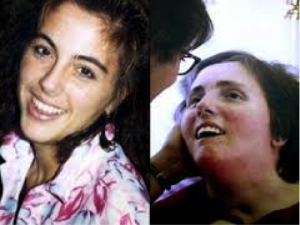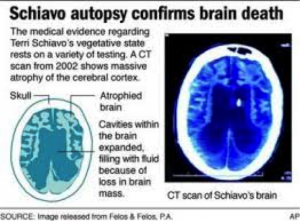Background:
In 1993 Robert Latimer killed her 12 year old daughter by carbon monoxide poisoning. He freely admitted his participation in this murder. His daughter had been diagnosed with cerebral palsy since birth and was physically and mentally handicap since the beginning. Due to her physical disability was forced to undergo a myriad of surgeries just to stay alive. Out of so called mercy he decided to end her life. Many in the jury that tried him agreed with his point of view and gave him a light sentence. However those who fight for handicap rights challenged this ruling.
Dilemma:
This case brings up a 2 major dilemmas. The first one is euthanasia, should euthanasia be allowed in the first place, and if so who get’s to decide when it can be administered. The second is protecting and respecting the autonomy of those who are handicapped. Should Latimer’s point of view be accepted and this case taken as a precedent then it brings up the question of who is qualified to judge another person life as too painful to live and who get’s to say when they should be euthanised. If others are allowed to decide for those who are handicapped then where is the line drawn and many fear a slippery slope leading to abuse against handicapped people.
Discussion:
In life there is a limit to fighting, sometimes there are fights that we cannot win. Part of being wise is knowing when to thrown the towel and give in as sometimes it just not worth fighting. Thus in my personal opinion euthanasia should be a perfectly legal. In this case Latimer’s daughter’s life was not a life worth living. Her being bound both physically and mentally into a twisted shell of a body that requires painful surgery just to keep going. Her life is not what I would call living, that is merely existing. Should she live to adulthood she would still be bound to her parents and be unable to do anything on her own. At that point she is worse off than a rock as she feels pain but can’t move, can’t think straight, and in essence can’t live a life worth living. The fact that she has no autonomy bring into the slippery slope argument but there are degrees to this and her condition definitely constituted an instance where proxy action is required.
This is a similar problem seen in cancer patients who must undergo painful chemotherapy which may prolong their life only of so long. In the name of preserving life they must live life under constant pain and yet in a poll given to Germany doctors, 50% of them declared they would not undergo the same procedures and rather just let themselves die happy. Thus euthanasia I think is something that should be handled on a case by base basis. Instead of trying to preserve life above all else, quality of life should be factored in and “mercy killing” be allowed. Instead of running away from the issue there should be a standardization or laws that generate criteria that the majority of physicians can agree upon. This should in turn would help combat the worries of the slippery slope where euthanasia may be used against the will of handicap dependent patients.
By setting up a defined set of laws or at least a basic framework that would help decide when euthanasia can be declared and bringing this issue out into the open those who would abuse will be forced to go through the law and protection would be provided for those who cannot stand up for themselves.
Citations:
Scurr, Martin. “Why MOST Doctors like Me Would Rather DIE than Endure the Pain of Treatment We Inflict on Others for Terminal Diseases: Insider Smashes Medicine’s Big Taboo.” Mail Online. Associated Newspapers, 14 Feb. 2012. Web. 26 Feb. 2015.



